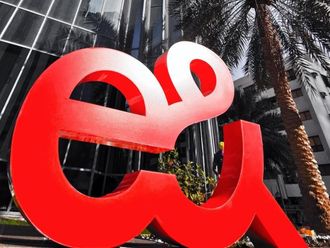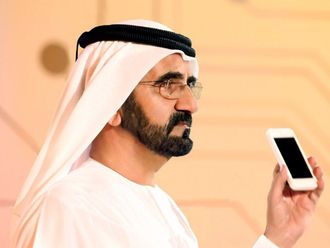Dubai: India's Tata Communications, world's largest integrated wholesale carrier, has announced that work on its $200 million (Dh734 million) Tata Global Network (TGN) Gulf undersea cable network is underway and it is expected to be completed before July 2011.
"As economic activity is increasing in the Middle East as well as the broadband and mobile connectivity, we are very optimistic about the region and hence we are building our presence with partners in the region," Vinod Kumar, President and COO of Tata Communication, told Gulf News on the sidelines of a press conference on Monday.
Growth potential
Tata's partners in the TGN Gulf project are Bahrain Internet Exchange in Bahrain, Nawras of Oman, Qatar Telecom of Qatar, Mobily of Saudi Arabia and etisalat of the UAE.
"We firmly believe in the growth potential and increasing dynamism in the region. This conviction translates tangibly into investments that will increase our infrastructure and services coverage throughout the region. Most importantly, this is steered by the strong foundational partnerships that we have formed with leading regional operators.
" We see the Middle East as a crucial building block in our emerging markets strategy and in delivering the new world of communications to our global enterprise customers," Vinod said.
The TGN Gulf will link with the world's largest network and provide extended portfolio of advanced telecommunications services such as global ethernet, multiprotocol label switching-based virtual private network, managed security, IaaS [Infrastructure as a Service] and global telepresence.
All these services are ideally suited to support both local and global enterprises, which are very active in this rapidly expanding emerging market region.
The total capacity of the TGN Gulf is 1.28 terabits with two fibre optic cables and is constructed by US-based Tyco Telecommunications.
The construction started in October 2009 and will connect the region to the rest of the world providing high speed bandwidth to all the key cities of the world.
Ali Amiri, executive vice-president, carrier and wholesale services of etisalat, said: "Partnering with Tata Communications to increase the region's resiliency, connectivity and capacity through a new cable is a strategic move which will benefit everyone.
"This new cable, with its dual UAE landings, will provide additional resiliency and diversity to our global connectivity solutions.
Benefits
"Needless to say, the UAE economy as well as those in neighbouring markets who choose to be connected through TGN-Gulf cable will tremendously benefit from Etisalat's diversified connectivity and extended reach."
Vinod said that their strategy in the Middle East unlike other markets is to work with partners as they have local expertise.
The Middle East contributes around 5 per cent to the group's revenue. Last year the Middle East region contributed around $150 million (Dh852.3 million) in revenue to the total $2.5 billion in revenue.
Cable network facts
- Tata Communications, which is laying the new state-of-the-art cable network, will take around 22 months to construct and install the project.
- The length of the TGN Gulf is around 3,691 kilometres.
- When completed, the cable will add at least 1.28 terabits of additional international connectivity to the region.
- The cable will provide high-speed global routing that will encourage expansion in broadband penetration, internet usage and enterprise application.
- Tata Communications will be the first to have undersea cable network around the world in the form of a ring once the project is completed.
- Using its own cable station, each party will have access to the new high-speed internet highway and at the same time add much needed resilience and diversity to the infrastructure in each country.
- All modern cables use fibre-optic technology to carry digital payloads, which are then used to carry telephone traffic as well as internet and private data traffic.
- The total carrying capacity of submarine cables is in the terabits per second while satellites typically offer only megabits per second and display higher latency.












